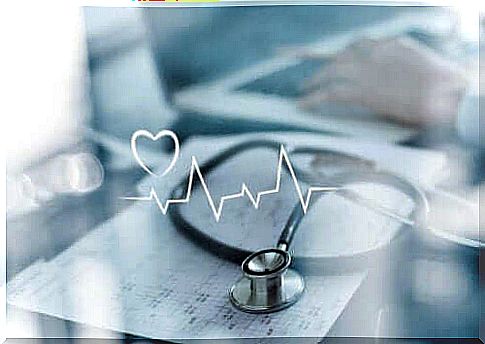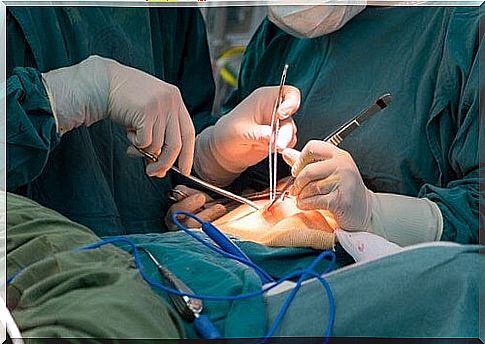Open Heart Surgery: What To Know?

Open heart surgery involves opening the chest and exposing the heart. It is the most common surgical procedure among adults and today has a very low risk of mortality, estimated at just over 2%.
It is typically done to treat blocked or abnormal coronary arteries. A study conducted by Dr David Montaigne of the University of Lille showed that the heart is sensitive to the circadian rhythm. Performing an open heart surgery in the afternoon, therefore, reduces the possible risks by about 50%.
When is open heart surgery necessary?
Generally, open heart surgery is done when a person needs coronary artery bypass grafting (CABG is the English acronym). The aim is to restore the proper blood supply to the heart, so as to limit the risk of a heart attack.
Coronary heart disease develops when arteries narrow and harden due to the accumulation of fat in them in the form of plaque. Following this, the blood cannot flow as it should and this can cause an obstruction.
Open heart surgery is also done to replace or repair valves or another part that is damaged or has an abnormality. For example, to implant grafts or to perform a transplant.

The most common open heart surgeries
There are two most common open heart surgeries: coronary artery bypass grafting and heart valve surgery. We talk about it in detail in the following lines.
Coronary artery bypass graft
Also known as coronary artery bypass grafting (CABG), it is the most common procedure and is performed when the blood vessels carrying blood have narrowed. To correct this condition, a coronary artery bypass is performed.
The procedure involves pulling a small portion of a vein from another part of the body to redirect blood flow to the heart muscle. If the artery has several blocked points, several bypasses will be made.
Heart valve surgery
The heart has four valves: aortic, mitral, pulmonary, and tricuspid. Each pumps blood to one of the ventricles into which the heart is divided. If one of the valves has an abnormality, open heart surgery can be done to correct it.
Sometimes the valves narrow, preventing blood from flowing as it should. this condition is called stenosis. In other cases, they do not close as they should and the blood flows back instead, so we speak of reflux or valve insufficiency. This causes several ailments that need to be addressed.
How is it done?
Open heart surgery takes three to six hours. Start with a vertical incision, in the center of the chest, between 20 and 25 cm. Then, the breastbone is incised, which is the bone in the center of the chest (this procedure is called a sternotomy). In this way the heart remains completely exposed.
In some cases, a cardiopulmonary bypass machine is used that draws blood through tubes and replaces the heart in pumping. This causes the heart to stop; however, the surgery can also be performed without the aid of this machine.
Once the procedure is done, the surgeon closes the sternum by joining the two halves with sutures or the tight suture method. Then, the initial incision is closed.
How to prepare for open heart surgery?
It is normal to feel agitated before open heart surgery. The main advice is to be well informed about the procedure and to rely on the medical staff. Hundreds of these interventions are performed every day with more than positive results.
Among the indications, the doctor will indicate to abstain from smoking and some medications in the two weeks prior to the surgery. At the same time, you should avoid eating after midnight on the day of the surgery. The patient will have to wash the chest with an antibacterial soap and shave the part if there is hair.
What are the risks?
The more advanced the heart disease, the greater the risks of open heart surgery. Nevertheless, any intervention of this type has an expected risk margin. Specifically, the main complications are myocardial infarctions or cerebrovascular events due to circulatory alterations.
Lung or kidney failure can also occur, and clots can form. These will manifest as urination disturbances and breathing difficulties (dysnea). Infections and bleeding are other possible complications.
Regarding the neurological aspect, memory loss and mental clarity are complications of which several cases have been recorded. These also depend on the effects of general anesthesia administered.
Convalescence after open heart surgery
After surgery, the patient must remain under observation in the ICU for 24 hours. He will have two or three drainage tubes in his chest, he will be given intravenous fluids and a urination catheter will be applied. The hospital stay can last up to 7/10 days.
What to know about engraving
The surgical wound is extensive, which requires special attention. You should wash your hands well before and after touching the incision and keep the area warm and dry. It will be necessary to check every day that there are no symptoms of infection. Showering is recommended only after checking that there is adequate healing.
Ache
Pain can be managed with physician-prescribed analgesics. Muscles throughout the body, especially the throat and chest, could hurt. Medicines must be taken strictly according to medical indications.
Rest
Getting as much rest as possible is recommended, but some people struggle to sleep well after open heart surgery. The advice is to avoid caffeine, to make the bed as comfortable as possible and to take the analgesic half an hour before going to sleep.
Rehabilitation
Cardiac rehabilitation programs include physical activity, risk factor management, and intervention measures on stress, anxiety and depression. This program is especially recommended because it offers great benefits.

You need to be patient after open heart surgery
Recovery after open heart surgery is slow and gradual. Immediate results or improvements are not to be expected. It may take up to six weeks before you start to get better.
Finally, it is essential to undergo checks and follow all medical indications. An intervention like this is usually successful and improves the expectations and quality of life of the person with heart disease.









